Disclosure: This article contains affiliate links. We may earn a commission from purchases at no extra cost to you, which helps our travel content.
The moment my feet touched down on Majuro's coral-lined runway, I knew this wasn't going to be like my usual Southeast Asian adventures. As someone who's tracked wild boar through New Zealand's dense bush and haggled at Mumbai's chaotic Crawford Market, I thought I'd seen it all. But Majuro—this slender atoll capital of the Marshall Islands—presents a unique proposition for the solo traveler. It's a place where the Pacific Ocean isn't just a backdrop but a constant companion, where traditional navigation techniques still hold value, and where $20 can either stretch remarkably far or disappear in an instant. After spending two weeks here during the winter season (December-February), I've compiled this guide to help fellow independent travelers navigate this remote Pacific outpost—complete with budget breakdowns, cultural insights, and the practical realities you won't find in glossy travel brochures.
Understanding Majuro's Unique Geography & Getting Around
Majuro isn't just an island—it's a long, skinny atoll that resembles a curved fishing hook when viewed from above. The entire landmass is barely 30 miles long but rarely exceeds half a mile in width. This unique geography means you're never more than a few minutes' walk from either the lagoon side (calm waters) or the ocean side (rougher waves).
Most visitors underestimate how challenging transportation can be here. There's essentially one main road running the length of the atoll, with the airport on the eastern end and the main town (Delap-Uliga-Djarrit, locally called 'D-U-D') clustered in the middle.
Taxis are available but operate differently than what you might expect. They function more like shared minibuses, following set routes and picking up multiple passengers. A one-way trip anywhere along the main road costs $0.75-1.00. To travel the entire length of the atoll might require multiple taxi changes.
For maximum flexibility, I recommend renting a scooter from Robert Reimers Hotel for about $35/day. Having my own transportation allowed me to visit remote beaches and time my market visits perfectly. If you're staying longer than a few days, this investment pays for itself in freedom alone.
Walking is possible for shorter distances, but the tropical heat makes this challenging for anything over a mile. I carried my insulated water bottle everywhere—staying hydrated is non-negotiable in this climate.

💡 Pro Tips
- Taxis run less frequently after 6pm—plan your evening returns accordingly
- Always carry small bills ($1-$5) for taxis and small purchases
- Download an offline map of Majuro before arrival—internet can be spotty
Where to Stay: Accommodations for Every Budget
Majuro isn't flush with accommodation options, but what's available spans a reasonable range for different budgets. I've stayed in everything from basic guesthouses to the island's premier hotel, and I'll break down the honest pros and cons of each.
Mid-Range Option: Robert Reimers Hotel
At $125-150/night, this is where I based myself for most of my stay. The location is central in Delap-Uliga-Djarrit (D-U-D), making it convenient for accessing markets, government buildings, and restaurants. Rooms are clean if somewhat dated, with reliable air conditioning (essential in this climate) and decent WiFi in the lobby area. The on-site restaurant serves both local and Western dishes, and the attached grocery store proved invaluable for stocking up on snacks and essentials.
Budget Option: Rairok Guest House
For solo travelers watching their spending, this basic accommodation ($55-65/night) near the airport offers simple but clean rooms with shared bathrooms. The family who runs it can prepare local-style meals for an additional fee, which I found to be an excellent cultural experience—one evening they served fresh tuna that had been caught that morning.
Local Experience: Homestays
Through connections at the Marshall Islands Visitors Authority (located in the airport terminal), I arranged a three-night homestay with a family in Laura (the western end of the atoll) for approximately $40/night including meals. This was undoubtedly the cultural highlight of my trip, though facilities were basic with bucket showers and limited electricity.
Regardless of where you stay, I recommend packing a travel sleep sheet for additional comfort and hygiene, especially in budget accommodations or homestays where bedding may be limited.
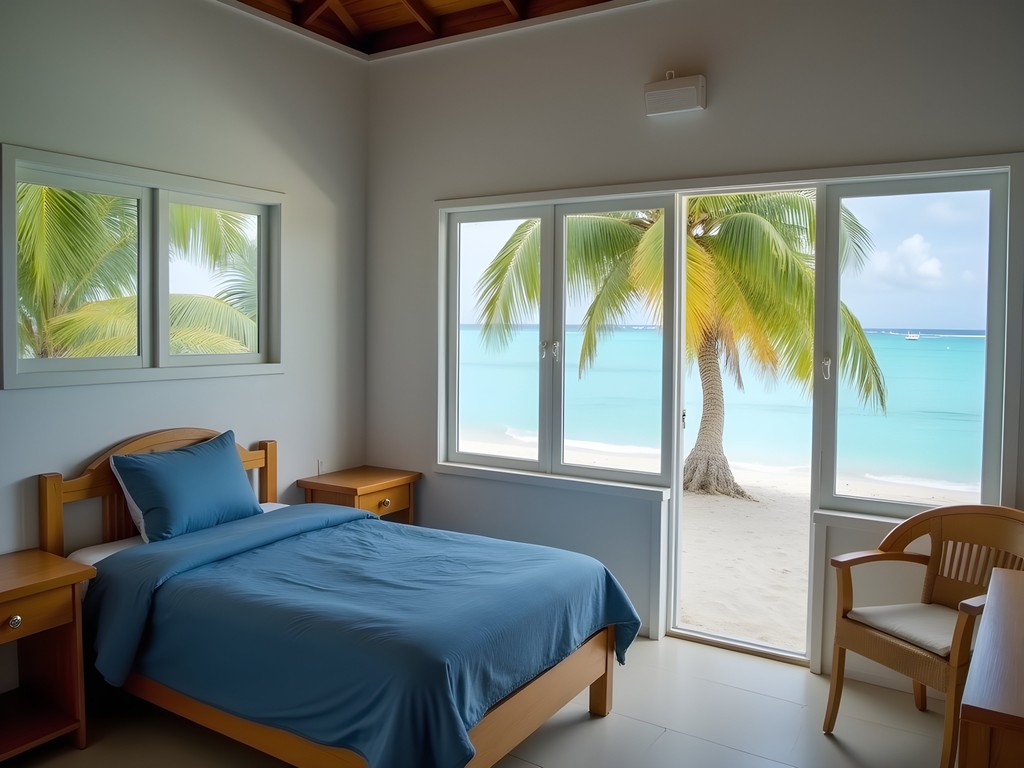
💡 Pro Tips
- Book Robert Reimers well in advance during government conference periods
- Bring earplugs—roosters start crowing around 4am across the entire atoll
- Ask about weekly rates for stays longer than 7 days—most places offer substantial discounts
Navigating Local Markets & Food Culture
If there's one thing my Māori hunting background and my husband Rahul's passion for regional Indian cuisine have taught me, it's that local markets are the true heart of any destination. In Majuro, this couldn't be more accurate.
Majuro's Main Market (Delap)
Located in the central area of Delap, this covered market operates Monday through Saturday from early morning until around 2pm. Unlike the structured markets I'm used to in Mumbai, Majuro's market has a wonderfully chaotic energy. Vendors sell an impressive variety of fresh fish (yellowfin tuna, wahoo, and reef fish), local produce (breadfruit, pandanus, coconuts, and seasonal vegetables), and handcrafted items.
I've developed a strategy for market visits that serves me well: arrive by 7am if you want the best selection of fish. The fishermen typically bring in their overnight catches at dawn, and the prime specimens disappear quickly. For produce, 9-10am seems to be the sweet spot when everything is fully set up but not yet picked over.
Laura Farmers' Market
On Saturdays only, the western village of Laura hosts a smaller but more traditional market. The 45-minute taxi ride from D-U-D (or 30 minutes by scooter) is worth it for the unique varieties of pandanus fruit and preserved breadfruit you won't find elsewhere. This is also where I found the most authentic handicrafts, particularly woven baskets and traditional navigation charts made from stick and shell.
Cooking Your Own Meals
If you're staying somewhere with kitchen access, cooking for yourself is both economical and rewarding. I purchased a beautiful 2-pound yellowfin tuna steak for just $5 and prepared it with local limes and coconut—a meal that would have cost $25+ at a restaurant. For cooking in unfamiliar kitchens, I always travel with my portable spice kit filled with my essential seasonings.
Restaurant Reality Check
Restaurant options in Majuro are limited and relatively expensive. The DAR Coffee Shop offers decent American-style breakfasts ($8-12) and sandwiches. For dinner, Tide Table at Robert Reimers Hotel serves reliable, if not exciting, options ranging from $15-25 per main course. My favorite discovery was Marshall Islands Resort's Thursday night buffet ($22) featuring local specialties like coconut crab and various preparations of taro.
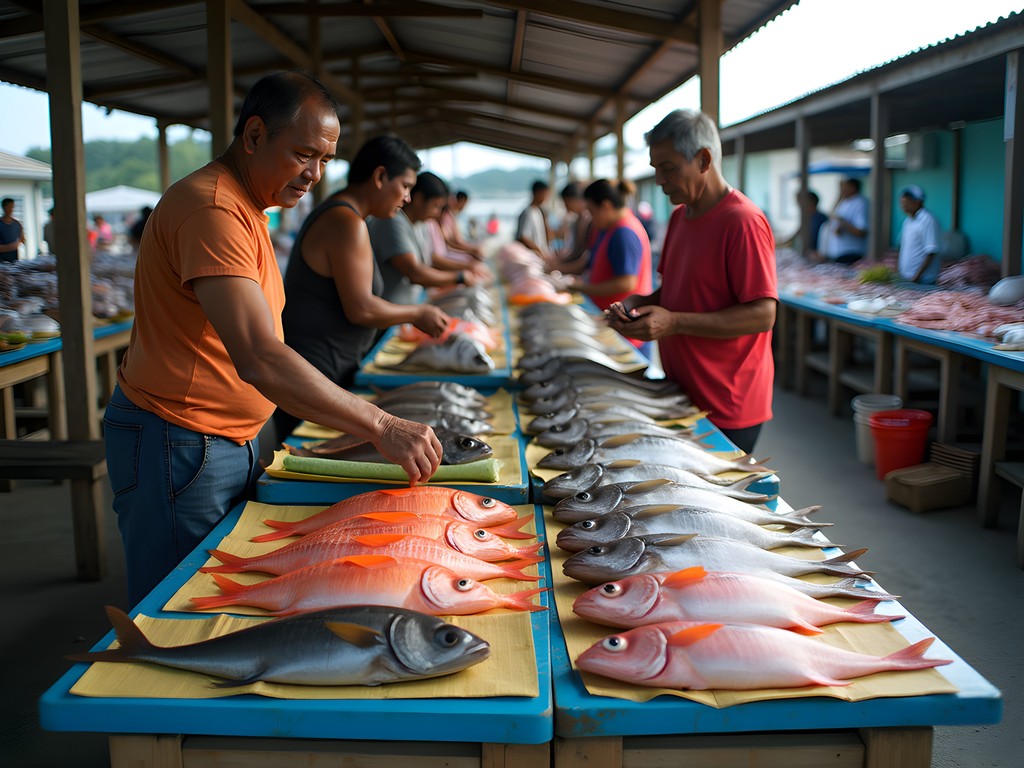
💡 Pro Tips
- Bring a reusable shopping bag for market purchases—plastic bags are being phased out
- Learn the Marshallese words for 'thank you' (kommol tata) and 'how much' (jete)—vendors appreciate the effort
- Ask before photographing people at markets—many Marshallese are camera-shy
Cultural Immersion & Respectful Engagement
The Marshall Islands' complex history—from traditional navigation society to colonial possession to nuclear testing ground to independent nation—has created a unique cultural landscape that rewards the patient and respectful traveler.
Understanding Marshallese Social Structure
Marshallese society operates on principles quite different from Western individualism. Extended family networks (bwij) form the foundation of daily life, and land ownership follows matrilineal patterns—meaning land passes through the mother's line. This explains why you'll often see multiple generations living together and why questions about family connections are common conversation starters.
During my homestay in Laura, I was immediately incorporated into family activities—from food preparation to childcare—which initially felt overwhelming but ultimately provided the deepest insights into local life. My host 'mother,' a woman named Rosie, spent evenings teaching me to weave simple palm frond baskets while explaining how traditional navigation techniques had been passed down through her family.
Appropriate Dress & Behavior
The Marshall Islands have been heavily influenced by American missionary work, resulting in conservative dress standards, particularly for women. I found that covering shoulders and knees was appropriate in most settings. For swimming, I wore board shorts and a rash guard rather than a traditional swimsuit, which helped me blend in with local women at the beach.
Photography requires particular sensitivity. Always ask before photographing people, and be aware that some older Marshallese may decline due to traditional beliefs about images. I found my compact camera less intimidating to subjects than larger DSLR equipment.
Language & Communication
While English is widely spoken in government offices and tourist-facing businesses, learning a few Marshallese phrases goes remarkably far in building connections. I downloaded a basic Marshallese language app before arriving and practiced daily. Simple greetings like 'Yokwe' (hello/goodbye) and 'Kommol tata' (thank you very much) visibly delighted locals and often led to longer conversations.
Attending Church Services
Even as someone who isn't religious, I found attending a Sunday service at the United Church of Christ to be culturally illuminating. The harmonized singing alone was worth the early wake-up, and visitors are warmly welcomed. Dress conservatively (covered shoulders, below-knee skirts/pants) and be prepared to be introduced to the congregation.
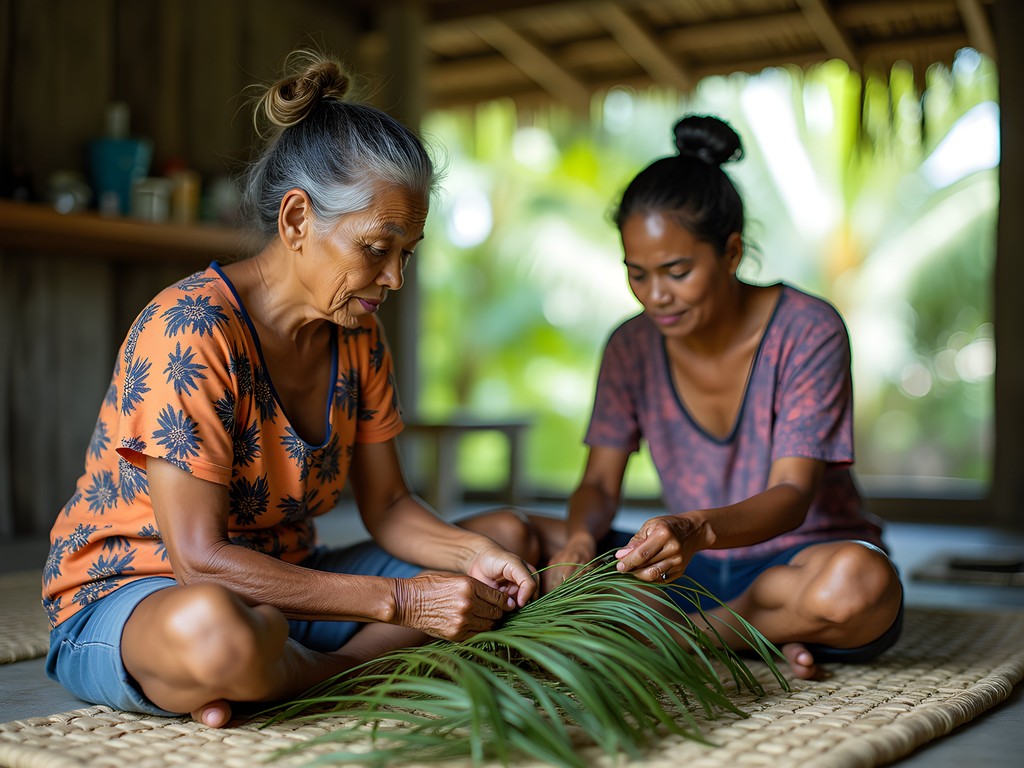
💡 Pro Tips
- Remove shoes before entering someone's home—this is non-negotiable
- When offered food, accepting at least a small portion is considered respectful
- Avoid discussing the nuclear legacy unless locals bring it up first
Ocean Adventures: Fishing, Snorkeling & Island Hopping
The Marshall Islands' identity is inextricably linked to the ocean, and no visit to Majuro would be complete without immersing yourself in maritime activities. My Māori background, where fishing is both sustenance and cultural practice, gave me an immediate connection with the local fishing community.
Fishing Excursions
Arranging a fishing trip requires some local connections, but the effort pays dividends in both experience and actual fish. Through my guesthouse owner, I connected with a local fisherman named Jebro who took me out on his small outrigger canoe for half-day excursions ($50-70 depending on fuel costs and duration).
While commercial operations offer more comfortable boats with modern equipment, I preferred these authentic experiences where traditional knowledge guided our fishing spots. Using hand lines rather than rods, we caught several reef fish and a small yellowfin tuna. The highlight was learning to use coconut husks as bait—a technique I'd never encountered despite growing up fishing New Zealand's waters.
Snorkeling the Lagoon
Majuro's lagoon side offers calm, protected waters ideal for snorkeling, particularly around the small uninhabited islands (motu) scattered throughout. The most accessible good snorkeling is near the Marshall Islands Resort, where equipment rental costs about $15/day.
For more adventurous snorkelers, hiring a water taxi ($40-60) to take you to Enemanet Island rewards with pristine coral gardens and remarkable visibility. I spotted parrotfish, triggerfish, and even a small reef shark during my excursion. My underwater camera captured stunning images without requiring bulky underwater housing.
Day Trips to Outer Islands
While technically part of Majuro Atoll, the outer islands feel worlds away from the relative development of the main island. Ejit Island, accessible by water taxi ($30 round trip), offers a glimpse of more traditional living with its small community of about 200 people.
Arno Atoll, a separate atoll visible from Majuro's eastern shores, requires more planning but delivers an even more authentic experience. Field Trip ships (government vessels that service outer islands) sometimes accept passengers for around $15 each way, though schedules are notoriously unreliable. I spent one night on Arno in extremely basic accommodations, but the untouched beaches and traditional lifestyle made the journey worthwhile.
Water Safety Considerations
The ocean side of Majuro features strong currents and is generally unsuitable for swimming. Even on the lagoon side, tides can change rapidly, and few beaches have any form of supervision. Always inform someone of your water activities, and never snorkel alone—I partnered with fellow guests from my hotel when my usual travel companions (my husband and children) weren't with me on this solo trip.

💡 Pro Tips
- Pack reef-safe sunscreen—the coral ecosystems are fragile and worth protecting
- Water taxis rarely run to a schedule—build flexibility into your plans
- Carry more water than you think you'll need for any boat excursion
Confronting Climate Change: The Marshall Islands' Existential Challenge
It's impossible to write honestly about the Marshall Islands without addressing the existential threat climate change poses to this nation. With most land sitting less than two meters above sea level, rising oceans aren't a distant threat but a present reality reshaping daily life and long-term planning.
Visible Evidence
During my two weeks in Majuro, I witnessed three separate 'king tide' events where seawater breached seawalls and flooded roads, homes, and businesses. These events, once rare, now occur with alarming frequency. Walking along the ocean-side road near the airport, I noticed abandoned homes where families had relocated after repeated flooding made their properties uninhabitable.
The most affecting moment came during my homestay in Laura, when my host matter-of-factly showed me markers on their land where the high tide line had progressively advanced over the past decade. What was once a spacious beachfront yard is now underwater during high tides.
Adaptation Efforts
The Marshallese response to these challenges demonstrates remarkable resilience. Government-led initiatives to build seawalls protect critical infrastructure, while community-based projects focus on raised-bed agriculture to combat soil salinization. During my visit to the College of the Marshall Islands, I toured their agricultural program where students experiment with salt-tolerant crop varieties.
Responsible Tourism in a Vulnerable Nation
As visitors to a nation fighting for its survival, we have special responsibilities. I chose accommodations with demonstrated water conservation practices and avoided excessive resource use. The solar charger I brought reduced my reliance on the island's limited electricity grid, which still depends heavily on imported diesel.
Climate Conversations
While initially hesitant to discuss climate issues, I found most Marshallese eager to share their experiences once they realized my interest was genuine. At a community gathering in Laura, elders spoke passionately about their determination to remain on ancestral lands despite international pressure to consider relocation.
One young woman, a climate activist named Kathy who had represented the Marshall Islands at UN climate conferences, told me: 'We didn't cause this problem, but we're living with its worst effects. What we want isn't sympathy—it's action from the big carbon-producing countries.'
This perspective fundamentally changed how I view my own carbon footprint and travel choices. While I don't have perfect answers about how to balance my love of travel with its environmental impact, my time in Majuro has made these questions impossible to ignore.
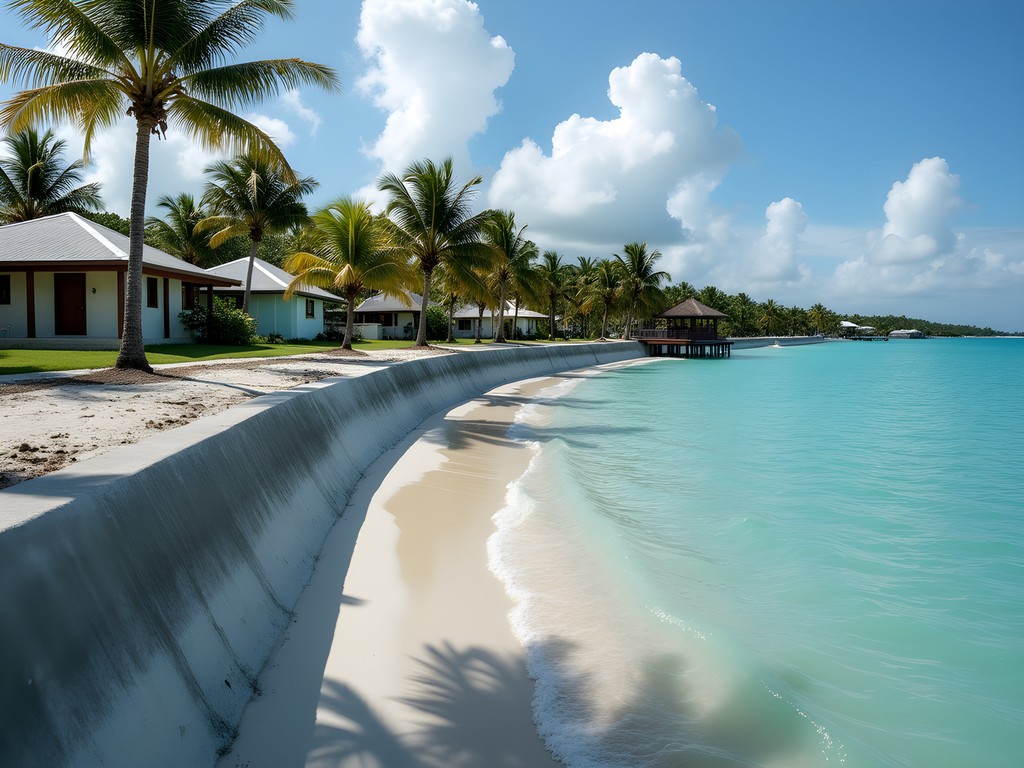
💡 Pro Tips
- Research current climate initiatives before visiting to understand context
- Consider carbon offsetting your flights to the Marshall Islands
- Support businesses implementing sustainability practices
Final Thoughts
As I prepared to leave Majuro after my two-week solo journey, I found myself with conflicting emotions. On one hand, the logistical challenges, limited infrastructure, and visible climate threats make this a destination that demands resilience from visitors. On the other hand, the genuine warmth of Marshallese hospitality, the untouched beauty of outer island beaches, and the profound cultural experiences created memories I'll carry forever.
Majuro isn't for everyone. If you require luxury accommodations, nightlife options, or seamless transportation, you'll be frustrated here. But for solo travelers seeking authentic connections in one of the Pacific's least-visited nations, Majuro offers rewards that far outweigh its challenges. The question isn't whether you should visit the Marshall Islands—it's whether you should visit now, while traditional knowledge remains vibrant and before rising seas further transform this vulnerable nation. My answer, despite the complexities, is an unequivocal yes.
✨ Key Takeaways
- Majuro rewards flexible travelers willing to embrace its limited infrastructure and unique challenges
- Building connections with local communities provides the richest experiences in this remote Pacific nation
- Climate change isn't abstract here—it's visibly reshaping the landscape and community decisions
📋 Practical Information
Best Time to Visit
November-April (dry season)
Budget Estimate
$100-150/day for mid-range solo travel
Recommended Duration
10-14 days
Difficulty Level
Challenging
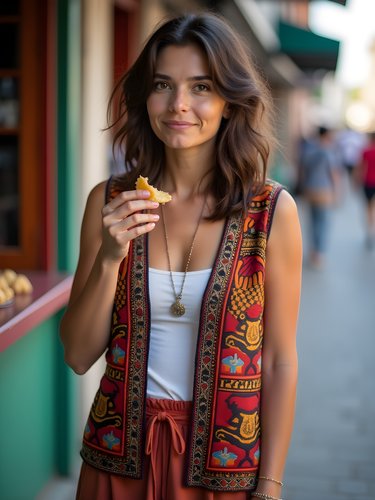
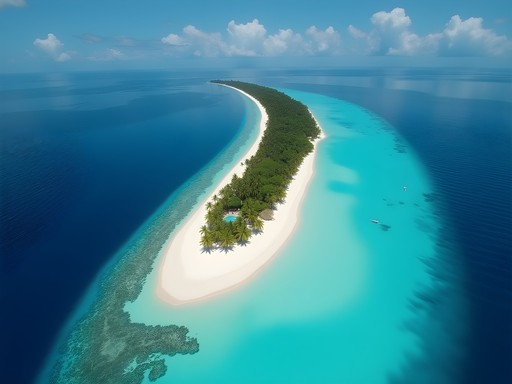
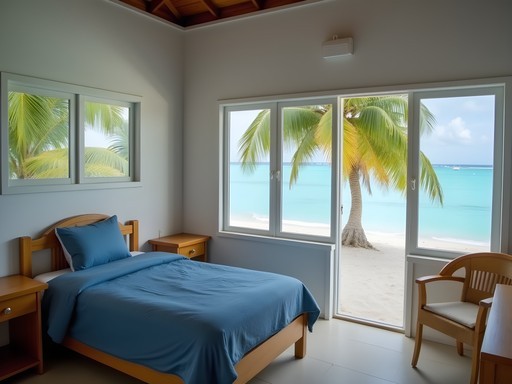
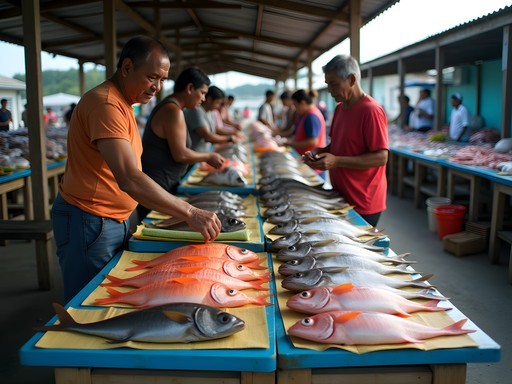













Comments
Claire Hawkins
Nicole, this is exactly the kind of guide I wish I'd had before visiting the Marshall Islands with my family last year! The cultural immersion section is spot on - we found that bringing small gifts from our home country was a wonderful way to break the ice with locals. One tip I'd add is to bring a good water filter bottle since plastic waste is a big concern on the islands and tap water isn't always reliable. Also, the Robert Reimers Hotel has a fantastic cultural night every Thursday where you can learn traditional dance - don't miss it if you're there midweek!
travelmood7518
Did you need to book the cultural night in advance? Planning to go in January!
Claire Hawkins
We just showed up, but it was off-season. Might be worth checking at reception when you arrive!
travelmood7518
Those sunrise photos from Laura Beach are incredible! Adding this to my bucket list.
islandlife
Those sunset pics are incredible! Adding Majuro to my bucket list right now.
roamking
Thanks for this detailed guide! I visited Majuro last year and was totally unprepared for how different it is from other Pacific islands. The transportation situation was definitely an adventure - ended up using those shared taxis a lot and met some really interesting locals that way. Did you make it out to any of the outer atolls? I wanted to but ran out of time.
Claire Hawkins
I've been considering Majuro for my next solo trip! How did you find the safety situation there, especially for women traveling alone?
roamking
It felt really safe! People were super friendly and helpful. The main thing is just the logistics - everything takes longer than you'd expect. Bring a good book for waiting times!
Nicole Mohamed
Thanks for sharing your experience! I didn't make it to the outer atolls either - that's definitely on my list for next time. And I agree with roamking about safety - I felt very comfortable as a solo female traveler, though I was always respectful of local customs regarding dress and behavior.
mountainnomad
Great post! How safe did you feel as a solo female traveler in Majuro? I've done Southeast Asia solo but never anywhere this remote. Also curious about food options - I'm vegetarian and wondering if that would be challenging there?
Nicole Mohamed
I felt very safe in Majuro! The locals are friendly and respectful. Being vegetarian might be challenging though - lots of fish and imported canned goods. The Chinese restaurants had some veggie options, and there's plenty of fresh fruit. I'd suggest bringing some shelf-stable favorites just in case.
mountainnomad
Thanks Nicole! That's really helpful. I'll definitely pack some protein bars and nuts as backup.
Sage Dixon
Nicole, your post brings back so many memories of my time in Majuro! That coral runway arrival is unforgettable, right? I spent three weeks there last year documenting traditional navigation practices. One thing I'd add for solo travelers - the Robert Reimers Hotel has a great community bulletin board where you can find local events and sometimes even boat shares to outer atolls. I connected with a marine biologist there who took me to Laura Beach with all the equipment for an amazing snorkeling day. Also found that carrying a water filter bottle was essential given the limited drinking water options. Did you make it out to any of the outer atolls?
Nicole Mohamed
Thanks for the amazing tips, Sage! I didn't know about the bulletin board - that's gold for my next visit. I only made it to Arno Atoll for a day trip, but it was a highlight. The water filter bottle is smart - I was buying bottled water and felt terrible about the waste.
SoloTraveler50
How's the internet situation in Majuro? Need to stay connected for work while traveling.
Nicole Mohamed
The internet is available but can be spotty. Hotels and some cafes have WiFi, but don't expect high speeds. I'd recommend getting a local SIM card as backup - NTA is the main provider there.
coolstar
This is exactly what I needed! I've been thinking about visiting somewhere off the beaten path, and Majuro wasn't even on my radar until now. How was the internet connection there? I need to stay somewhat connected for work emergencies.
Sage Dixon
When I was in Majuro last year, the internet was surprisingly decent in the main hotels and cafes, but definitely spotty elsewhere. I'd recommend getting a local SIM card as backup!
Nicole Mohamed
Thanks for jumping in, Sage! @coolstar - exactly what Sage said. I used NTA's mobile data which was adequate for basic needs, but don't expect to be streaming videos. Most accommodations advertise WiFi, but prepare for occasional outages.
PacificDreamer
Just got back from Majuro last month! Definitely second your advice about respecting local customs. I'd add that bringing small gifts for homestay hosts is really appreciated - I brought coffee and chocolate from home and it was a hit.
mountainbuddy4007
Good to know about the gifts! Did you do a homestay? How was that experience?
PacificDreamer
Yes! Stayed with a family in Laura for 3 nights. Incredible experience - they taught me traditional fishing methods and I got to help prepare local dishes. Definitely recommend it for a more authentic experience.
island_hopper22
Love this! Been wanting to visit Majuro for ages. Your pics are amazing!
Venture X
Premium card with 2X miles, $300 travel credit, Priority Pass